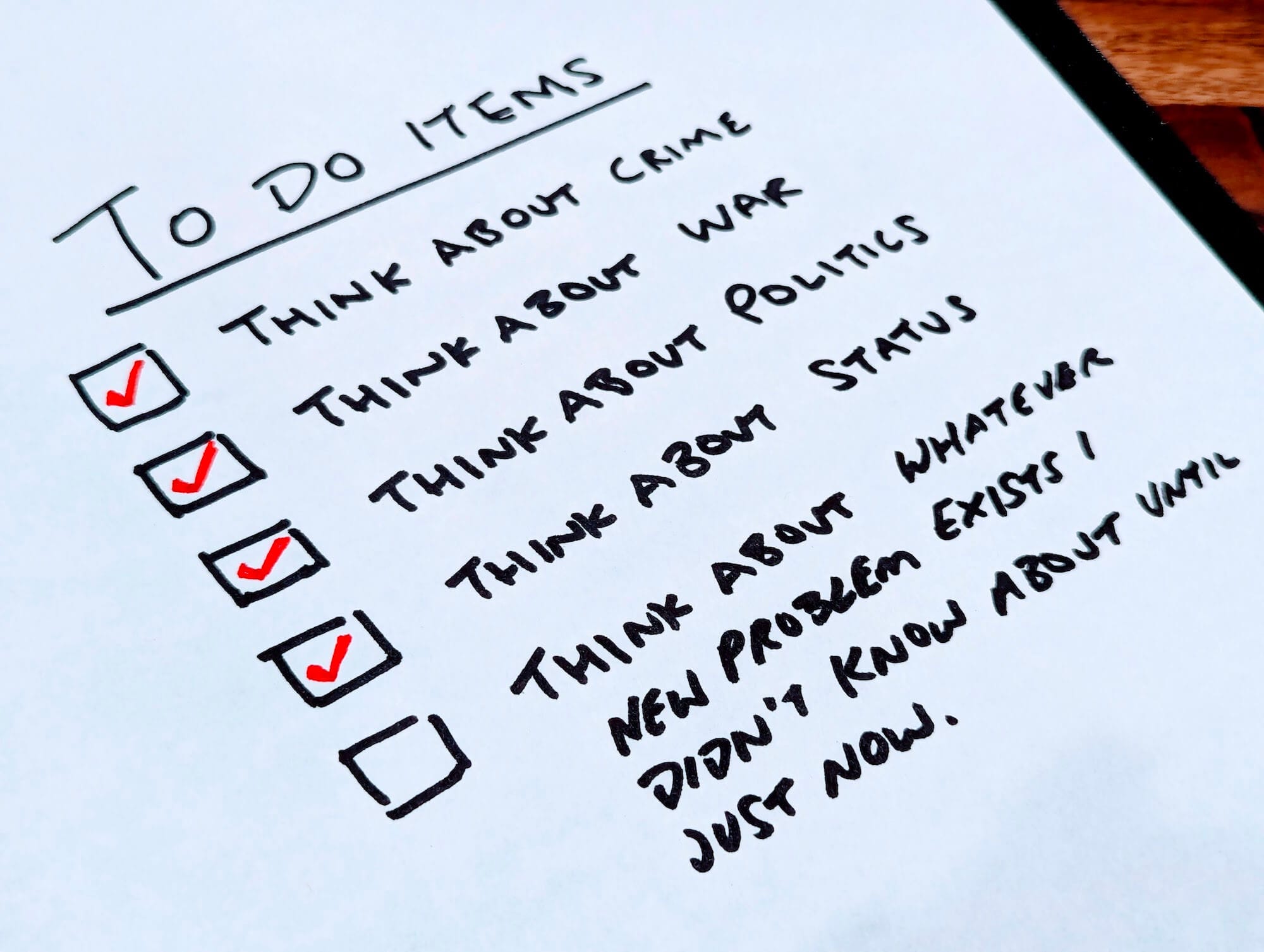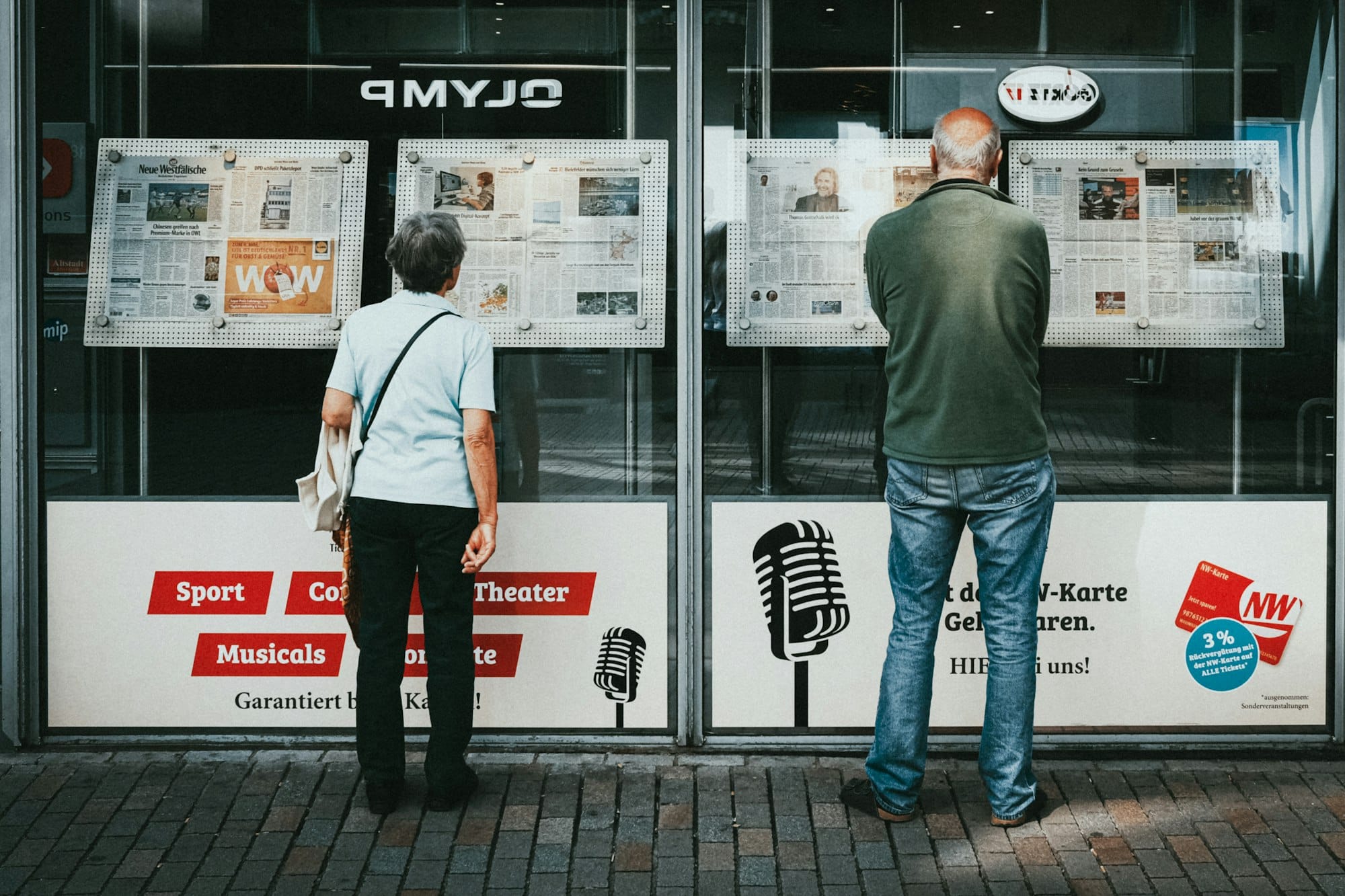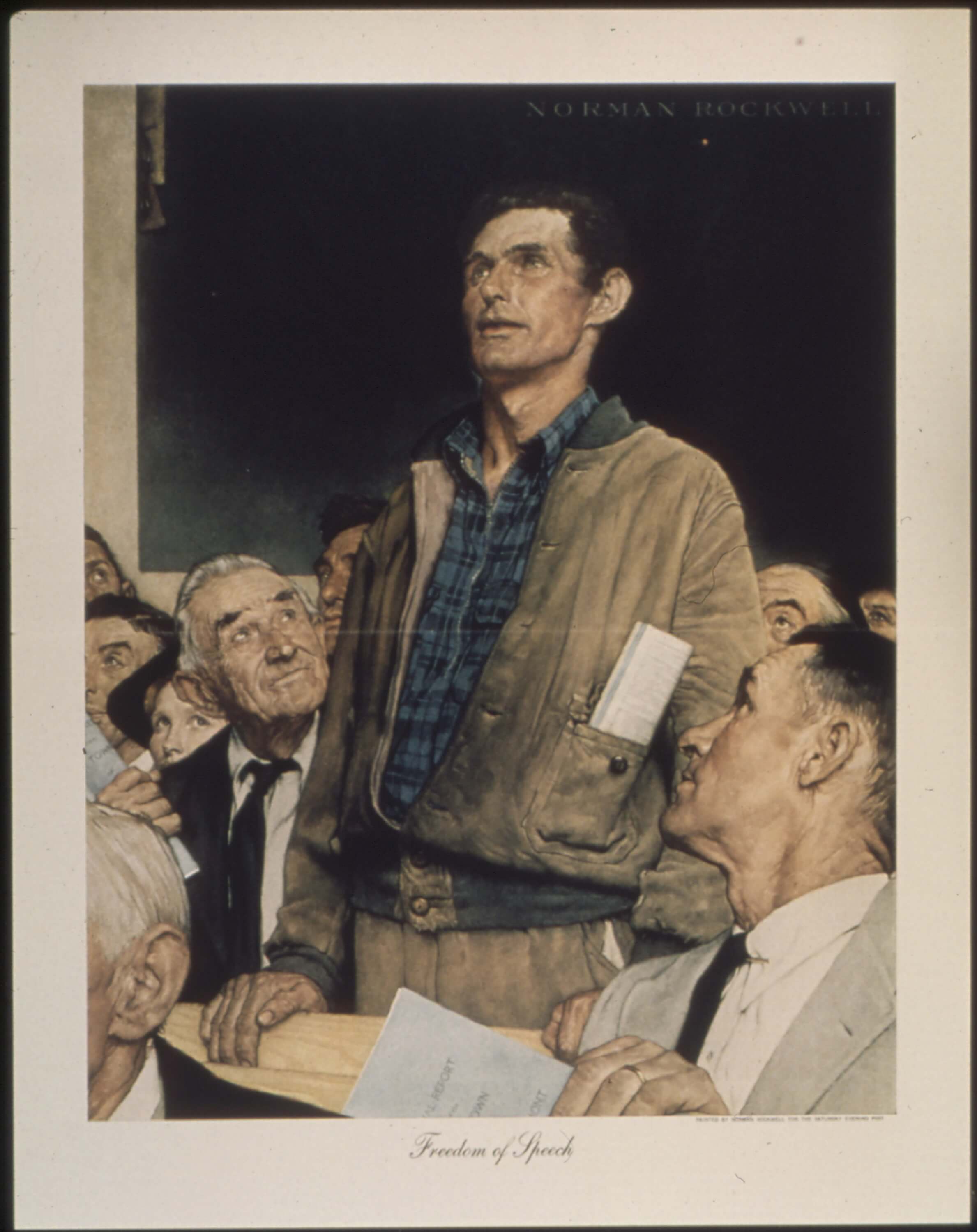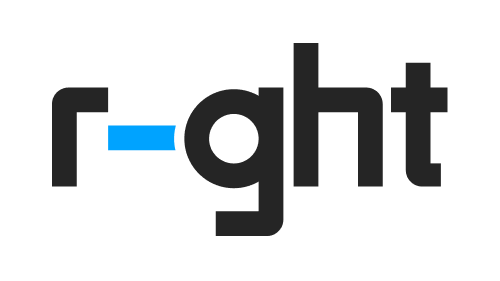Agenda-setting theory
Media can't control what you think directly, but it can influence what you think about indirectly — this is the key to Robert Cialdini's agenda-setting theory.

Ask a dozen people what the most pressing issues are today and you're bound to get a list of hot topics — from social issues to crime to politics to climate change to war to public figures and celebrities ... on and on.
But why are those issues the hot topics?
Are the issues on the news really the most important issues today?
Or is something else going on?
Now, if you would, please set aside your opinions stories on all the hot topics today — and your tin foil hats.
This is no conspiracy theory.
It's just how media influence works — plus some advice about you can do about it.

The indirect influence of the media
In Robert Cialdini's second book¹ Pre-suasion he introduces a new concept of influence called "agenda-setting theory." Inspired by Daniel Kahneman's focusing illusion — i.e. "Nothing in life is as important as you think it is, while you are thinking about it" — agenda-setting theory is a frame for understanding how news media indirectly influences public opinion. Here's Cialdini:
"The central tenent of agenda-setting theory is that the media rarely produce change directly, by presenting compelling evidence that sweeps an audience to new positions; they are much more likely to persuade indirectly, by giving selected issues and facts better coverage than other issues and facts."
(See the full quote in this review of Robert Cialdini's Pre-Suasion)
The media can't control what you think, but they can indirectly influence what you think about.
And that's a very, very big deal.

The big deal of attention
Let's start with this principle:
You only have so much attention to give, so anything you attend to must be important.²
Because attention is precious, when you pay attention to any media, you rubber stamp "Important!" on that media.
This is subtle. Indirect. And this indirect influence adds up. The more attention you give any media, the more important that media must be. Around and around this goes.
Because most people aren't on guard against indirect influence, the persuasion easily goes unnoticed.
This self-explanatory, recursive (yet not obvious) characteristic of media is the basis for agenda-setting theory.
Cialdini introduced this theory to understand the influence of news media, but it clearly applies to all media — from legacy media to social media to any media, past, present, and future.
"The press may not be successful most of the time in telling people what to think, but it is stunningly successful in telling them what to think about."
– Bernard Cohen
Agenda-setting + WYSIATI = power
Now that you understand agenda-setting theory, think back to Kahneman's "what you see is all there is." (If you're not familiar with purple tigers and lions, go read up and circle back.) Remember how people use stories to make sense, and once a good story takes hold, that story becomes "all there is."
Agenda-setting theory and WYSIATI are powerful together.
Media influences people indirectly by raising attention regarding specific facts and issues (agenda-setting theory). Media thereby generates demand for stories as people try to make sense of the facts and issues. Once the demand for stories exists, media has the opportunity to influence directly through supplying stories to satisfy that demand.
This one-two punch makes it possible to stand up your own narrative — whatever story you want to fit the facts, and it's why Nassim Taleb asserts, "The facts are true, the news is fake."
Okay, so now that you understand how media combines agenda-setting with WYSIATI to powerful effect, what can you do with that knowledge? Two recommendations:
- Defend against media — this applies to everyone.
- Go on the offensive with media — this applies to anyone, any brand, or any company desiring to generate attention and influence.

Defend against media
How do you defend yourself against the influence of media?
Awareness. Exposure. Filters.
Raise your awareness
Start with awareness. If you're consuming media, try to spot the agenda being set. Once you think you see it, ask if it's worth your attention. Would you have cared about the issue had you not learned about it? Why or why not? Is there anything you can do about the issue? If so, what?
Try distancing yourself from the information for at least a day to see if it's still something you want to learn about it. When in doubt, close it out.
Try not having an opinion about the issue. There's no reason you need to have an opinion on everything. Hang out in the "quantum" space of opinions. Remain open. Avoid drawing conclusions. The superposition of non-opinion is super powerful.
Finally, ask cui bono — who benefits from this attention?
Control your exposure
Next, reduce your exposure to media.
If you've ever been on a diet, you know Diet Rule no. 1: Don't keep junk food in your pantry. No Doritos. No cookies. No ice cream in the freezer.
The same is true for media that's been processed by editors — or algorithms — to be maximally tasty to your mind: Keep junk media off your phone.
Your mind will thank you.
(If you can't part with the apps, try using their browser-based versions only. That extra friction will help ... a little.)
Filter through people
Third, trust in your network to reveal what's important. People are filters.
You'd be surprised how often your networks will bubble up what's important to you, a "local" kind of agenda-setting theory. Gossip is the oldest example.
This doesn't make the information you get through the grapevine good. That's the point. You'll intuitively filter information by the source. You'll listen with a grain of salt to the uncle addicted to conspiracy theories. You'll be more skeptical to the friend addicted to [fill-in-the-blank news organization or social media app].

The above will go a long way to improving your defenses against the influence of media.
Now if you must consume media — or you work in the world of public relations, content, communications, etc. — you will need to keep an eye on the current "agenda." That way you can figure out how best to win attention and go on the offensive with media.
Go on the offensive with media
Now you know why "there no such thing as bad press:" Because any attention given by the media to a subject, a company, a person, whatever indirectly sends a second order message — that the subject matter is important.
For anyone hoping to raise the importance of an issue, bad press is a win. But while bad press may be good, try selling it as a strategy to anyone.³
Instead, if you want to promote your company or brand with media, consider these two tried-and-true approaches:
1. Introduce novel facts or issues
This is the obvious solution: Be newsworthy. Do something no company or brand has ever been done before, something hard and exciting, something scary and inspiring.
Easy? Nope! That's the point. If you read 1,000 press releases you'll find 999 companies announcing things no one cares about whatsoever.
If you have to announce it, it's not worth announcing. (Sorry for the bad news.)
The trick to introducing novel facts and issues is to do the work no one else is doing. Build the thing no one has built. Put in the time to see, understand, and tackle a problem people care about but no one is solving:
- Introduce a new product that solves an old problem in a remarkable new way.
- Commit publicly to do something remarkable. Just be careful: This only works with a non-optional investment that makes it costly to renege. In general, this is a much less effective strategy unless your company has made and met commitments in the past.
Consider what would motivate people — what's in it for them? If you've done the work to walk their desire paths, this could look like going all-in on how your product gets the job done best.
Done well, the showing will lead to the telling. People will do the announcing for you — and you'll know with confidence that you can pour on gasoline with any further announcements, interviews, campaigns, or marketing investments.

2. Take a stand
"Speaking truth to power" is an ancient concept — going at least as far back as Ancient Greece with the word παρρησία, parrhesia.
What makes stating the truth to kings, governments, or institutions so timeless, so powerful? As Noam Chomsky put it, "power knows the truth already, and is busy concealing it." Chomsky asserts that it's those who know the truth but are too afraid to speak it — that they are the ones who most need to hear the truth said aloud.
"Truth to power" works outside of politics too. The truth can be a bold, novel understanding of an existing problem that many people have — a problem going unsolved by existing products or organizations. In this case, the truth can reframe existing facts or issues, offering people a new story and perspective. The job of your communication will be to take existing facts and issues and make sense of them in a whole new way.
It's like alchemy for the mind.
For example, in the early days of Salesforce, Marc Benioff created news out of thin air by reframing software as a product you buy once, install, and access on your own servers. The shift in frame was to imagine software as a service available over the Internet. "Software as a Service" (SaaS) was born as Benioff built a platform tearing down the old regime.
You know the story: Benioff proclaimed the end of software, "No more software!" He had a fake protest staged at the Siebel User Conference in San Francisco, signs and everything. An innocuous form of astroturfing, the stunt won attention, giving Salesforce something to stand for and on. Benioff carried on with his story until it changed the facts. SaaS became normalized, and Salesforce became one of the largest companies in the world.
Smaller companies and brands must punch up. When you have an unsaid insight about a problem, turning that revelation into a story and proclaiming that story loudly becomes a bold, powerful act. If you're clever, you can follow Benioff's lead, being edgy until you can't be ignored.
Punching up takes courage — it makes news.

Who will set your agenda?
The influence of media is everywhere — and not at all limited to mainstream or legacy media. No, today, media is in your pocket and the mix of media you consume is yours and yours alone.
So now that you understand how media influences what you think about, how will you use that awareness?
What steps will you take to defend your attention?
For companies and leaders, use your know-how to tell a new story, a story that's not yet been told ... a story that reframes the world around it.
This article is part of a growing collection of frames for understanding what's right for people — in order to build better businesses, products, and services.
Footnotes
¹ Influence was originally published in 1984 — Pre-suasion in 2018. To this day, Influence is one of the most popular books ever written for understanding persuasion, and by extension, marketing.
² Agenda-setting theory is introduced in Cialdini's chapter titled "The Importance of Attention ... Is Importance." Yes, this is a bit of a tautology — it's another way to define attention.
³ Yes, it works for some one day case studies will be written on Donald Trump's knack for generating bad press and wielding that influence for political gain

